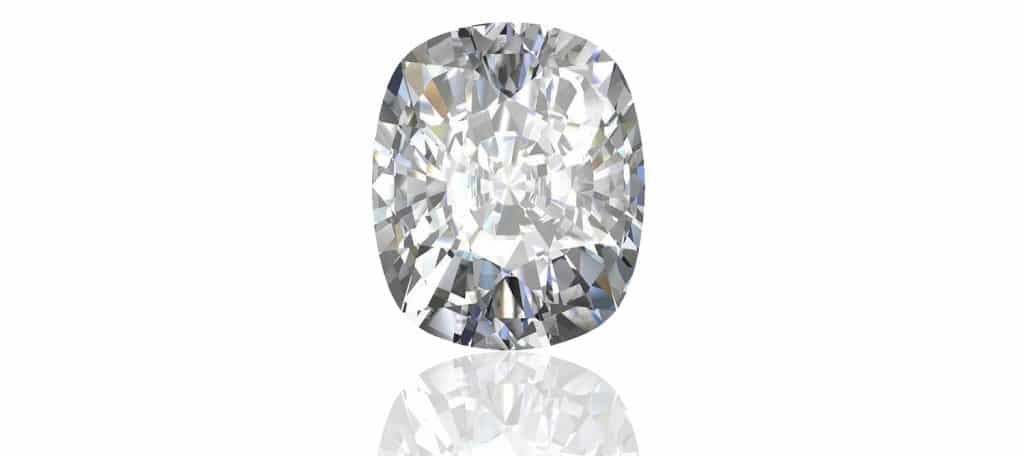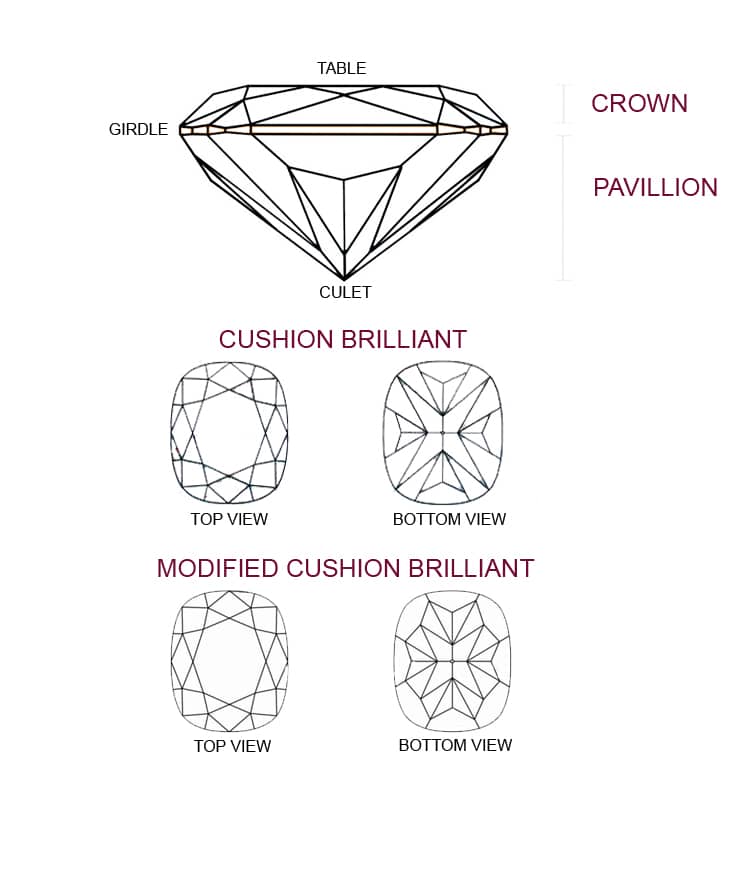Home » Diamond Education Center » CUSHION CUTS
The

Before there were the round cuts, there was the Cushion Cut. A square or slightly rectangular shape with curved sides and rounded or pointed corners, it gets its name from a pillow-like appearance. After the Round Brilliant and the Princess Cut, it is, according to a survey carried out in the 2013 by the bridal website, The Knot, the third most popular shape in the market.
The Cushion Cut is also one of the oldest cuts available, although its facet configuration has changed quite notably over the years. Originally known as the Old Mine Cut, it can be traced to the period when Brazil was the dominant supplier of rough diamonds, starting in the late 1700s, and it remained the most widely available polished diamond shape until the end of the 19th century. The Old Mine Cut was characterized by a squarish shape with a high crown, small table, deep pavillion and a large culet, and was suited to the more limited technology being used by cutters the time.
Modern Cushion Cuts were influenced by research conducted by Marcel Tolkowsky in the 1920s, which led to a shrinking of the culet, an enlarging the table, and an improvement of the cut angles for increased brilliance, resulting in their being called Cushion Brilliants. Typically, such stones will have four or eight kite-shaped main facets between the girdle and the culet.
Sometimes, an extra row of facets is included, most typically on the pavillion, and the shape is called the Modified Cushion Brilliant. These have what is called a “crushed ice” appearance, with a distinctive needle-like facet pattern.
For Cushion-Cut diamonds that are square, the length-to-width ratio should not exceed 1.05. The most popular shape is a slight rectangle, with length-to-width ratios of 1.10 to 1.20.
On its website, the Gemological Institute of America (GIA) suggested that several factors be taken into consideration when considering the purchase of a Cushion-Cut diamond.
First, it is important to check for symmetry in the stone’s outline, making certain that the sides and corners mirror each other in the amount of curve. This will prevent the acquisition of an off-shape stone.

Second, while there is nothing inherently unusual about the girdle of a Cushion-Cut diamond varying in thickness, with the girdle at the corners being thicker than between corners, one must take into consideration that the existence of overly thin sections makes the girdle vulnerable to chipping. GIA suggest having such stone mounted in bezel settings, rather than prongs, to protect the girdle from damage.
Third, one should not expect Cushion Cut to have the same sparkle as Round Brilliant or Princess Cut diamonds, where the pattern of the sparkle is different. “The best way to determine if a Cushion-Cut diamond meets your sparkle quotient is to see the diamond in person. Ask your local jeweler to show you several Cushion Cuts so that you become accustomed to their appearance and better judge what makes for a pretty Cushion Cut,” GIA noted in an online article.
MORE DIAMOND SHAPES
